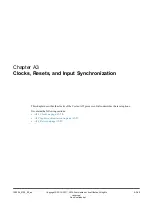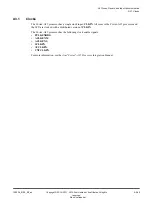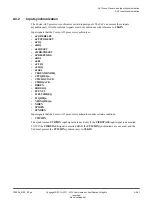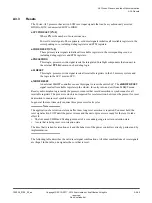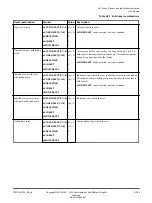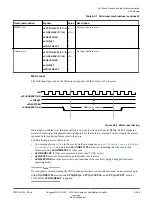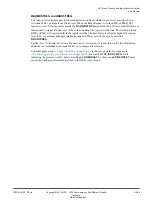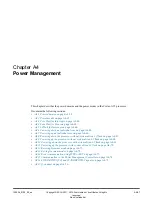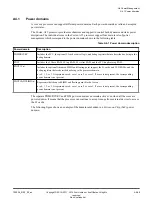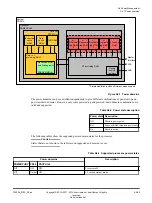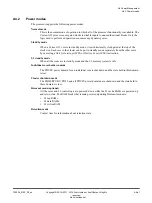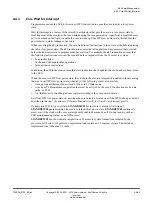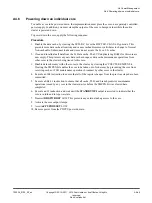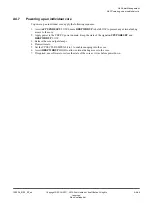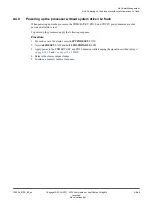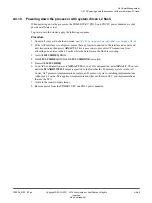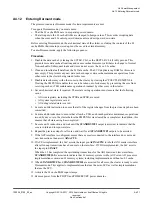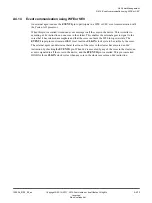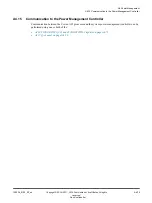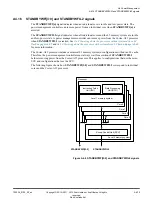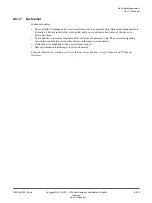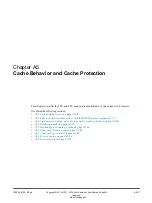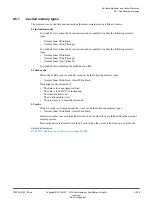
A4.4
Core Wait for Event
A core can use the
Wait for Event
(WFE) instruction to cause the core to enter a low-power state.
Wait for Event
(WFE) is a feature of the Armv8-A architecture. It can be used by a locking mechanism
based on events to put the core in a low-power state by disabling most of the clocks in the core while
keeping the core powered-up. Apart from a small dynamic power overhead on the logic to enable the
core to wake up from WFE low-power state, this reduces the power drawn to static leakage current only.
When executing the
WFE
instruction, the core waits for all instructions in the core to complete before
entering the idle or low-power state.
If the event register is set, execution of a
WFE
instruction does not cause entry into standby state, but
clears the event register.
While the core is in WFE low-power state, the clocks in the core are temporarily enabled without causing
the core to exit WFE low-power state, when any of the following events are detected:
• An L2 snoop request that must be serviced by the core L1 Data cache.
• A cache or TLB maintenance operation that must be serviced by the core L1 Instruction cache, data
cache, or TLB.
• An APB access to the debug or trace registers residing in the core power domain.
Exit from WFE low-power state occurs when the core detects a reset, the assertion of the
EVENTI
input
signal, or one of the WFE wake-up events as described in the
Arm
®
Architecture Reference Manual
Armv8, for Armv8-A architecture profile
.
On entry into WFE low-power state,
STANDBYWFE
for that core is asserted. Assertion of
STANDBYWFE
guarantees that the core is in idle and low-power state.
STANDBYWFE
continues to
assert even if the clocks in the core are temporarily enabled because of an L2 snoop request, cache or
TLB maintenance operation, or an APB access.
CLREXMON request and acknowledge signaling
When the
CLREXMONREQ
input is asserted, it signals the clearing of an external global exclusive
monitor and acts as a WFE wake-up event to all the cores in the cluster.
The
CLREXMONREQ
signal has a corresponding
CLREXMONACK
response signal. This forms a
standard 2-wire, 4-phase handshake that can be used to signal across the voltage and frequency boundary
between the core and system.
The following figure shows the
CLREXMON
request and acknowledge handshake. When the request
signal is asserted, it continues to assert until an acknowledge is received. When the request is deasserted,
the acknowledge can then deassert.
CLREXMONREQ
CLREXMONACK
Figure A4-2 CLREXMON request and acknowledge handshake
A4 Power Management
A4.4 Core Wait for Event
100236_0100_00_en
Copyright © 2015–2017, 2019 Arm Limited or its affiliates. All rights
reserved.
A4-63
Non-Confidential
Summary of Contents for Cortex-A35
Page 4: ......
Page 18: ......
Page 26: ......
Page 27: ...Part A Functional Description ...
Page 28: ......
Page 145: ...Part B Register Descriptions ...
Page 146: ......
Page 573: ...Part C Debug ...
Page 574: ......
Page 845: ...Part D Appendices ...
Page 846: ......

